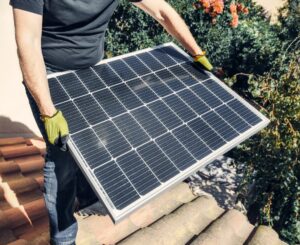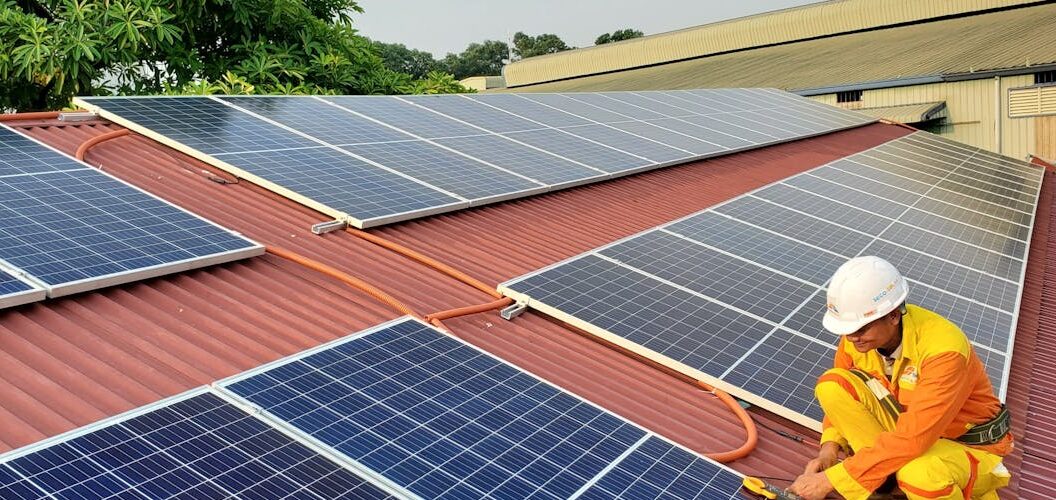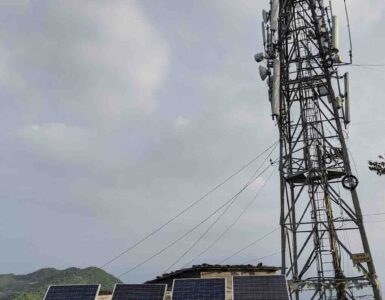In April 2024, India’s leading private renewable player, Adani Green announced Khavda Renewable Energy Park, spread over 538 square kilometres, touted as the world’s largest solar power plant in a single location.
As India works towards a 500 GW renewable energy capacity target by 2030 to achieve its 2070 Net Zero climate goals, it would need many more large-scale Khavda-like renewable energy parks.
The total installed non-fossil fuel capacity reached 213 GW in November 2024, an increase of over 14% compared to 187.05 GW in the same period last year. Between April and November of 2024 alone, India added nearly 15 GW of renewable energy capacity, almost double the 7.57 GW during the same period last year.

Out of the 213 GW of renewable energy, the share of solar energy has reached 94 GW, wind power is 48 GW, Bioenergy is 11 GW, Hydropower is 52 GW and Nuclear energy is 8 GW.
The progress in India’s renewable energy journey is on the back of several schemes and policy decisions.
In 2014, the government launched a scheme for “Development of Solar Parks and Ultra-Mega Solar Power Projects” to facilitate the solar project developers to set up projects expeditiously.
While this scheme has worked well and enabled the setting up of over 50 solar parks in the country, to push India’s renewable energy journey, more is needed.
Since the launch of the solar park scheme, the government in the past decade has launched several other initiatives to boost renewable energy investments in the country which encompasses more stakeholders.
In September 2024, during the 4th Global Renewable Energy Investment Meet & Expo (RE-INVEST) in Gujarat, the Indian prime minister mentioned, that India has turned the ‘green transition into a people’s movement’.
One of the most significant schemes as part of this people’s movement is the ‘PM Surya Ghar: Muft Bijli Yojana‘. The scheme targets rooftop solar installation in ten million households by 2027 and offers subsidies ranging from Rs. 30,000 to Rs. 78,000 per household. Launched in February 2024, within 10 months of the rooftop solar scheme, 0.7 million households have already availed of the benefits.
Then to boost domestic manufacturing of solar modules, in Budget 2022, the government announced the Production Linked Incentive (PLI) Scheme. This scheme has made provision for incentives to the selected solar PV module manufacturers for five years post commissioning, on the manufacture and sale of High-Efficiency Solar PV modules.
The rapid expansion of solar energy has positioned India among the world’s leading solar energy markets like China and the USA. In 2023, it surpassed Japan to become the world’s third-largest solar power-generating country.
Apart from the focus on solar energy, another important cog in India’s renewable energy journey for the next few years is green hydrogen. Green hydrogen has emerged as a clean energy source as it is produced using electrolysis of water (H2O) with electricity generated by renewable energy, such as wind or solar.
The government aims to establish India as a global hub for green hydrogen production and export. In 2022, the Indian government launched the National Green Hydrogen Mission with an outlay of Rs. 19,744 crore (~US$ 2.3 bn).
Green hydrogen has multiple applications, like in manufacturing, transport and cooking sectors. Through the green hydrogen mission, India expects to reduce fossil fuel imports by ~US$12 billion and cut carbon emissions by 5 million metric tonnes (MMT) by 2030, which will be significant for the country’s climate goals.
In the last few months, multiple government-led initiatives have been made as part of the mission, including awarding 3000 MW for electrolyser manufacturing and 4,12,000 tonnes per annum (TPA) for Green Hydrogen production. Further, many pilot projects in transportation, steel, and natural gas blending are also underway in various parts of the country.
Several other smaller schemes are also supporting India’s renewable journey, like PM KUSUM for decentralized solar plants on farmers’ land, the National Biomass Program to support the setting up of Biomass Briquette and Pellet manufacturing plants, and the International Solar Alliance to promote global solar cooperation.
In addition, various state government have launched their region-specific schemes and invested in multiple renewable projects, solar parks, mini-grids, etc. In terms of renewable energy capacity, Rajasthan is the leader among Indian states, followed by Gujarat, Tamil Nadu and Karnataka.
Wrapping Up
Since 2014, 129 GW of renewable energy capacity has been added through solar parks, wind farms, rooftop solar installations, small and large hydro-projects, bio-gas plants, etc.
While India’s renewable energy journey in the past decade is notable, it needs to be cautious of the path ahead.
As the country steps into 2025, it needs another 300 GW in the next 6 years, from 200 GW of non-fossil fuel capacity to 500 GW by 2030, translating to 50 GW capacity additions yearly.
However, if we look at the 2024 numbers, the addition was only about 27 GW, (from 187.05 GW in November 2023 to 213.70 GW in November 2024).
How will the country double its capacity additions, from where will the finances come from and whether the existing policies cater for the rise? It will be interesting to watch how renewable energy in India takes shape and we will keep a watch.
The article is written by Varun, founder of Change Started






Add comment